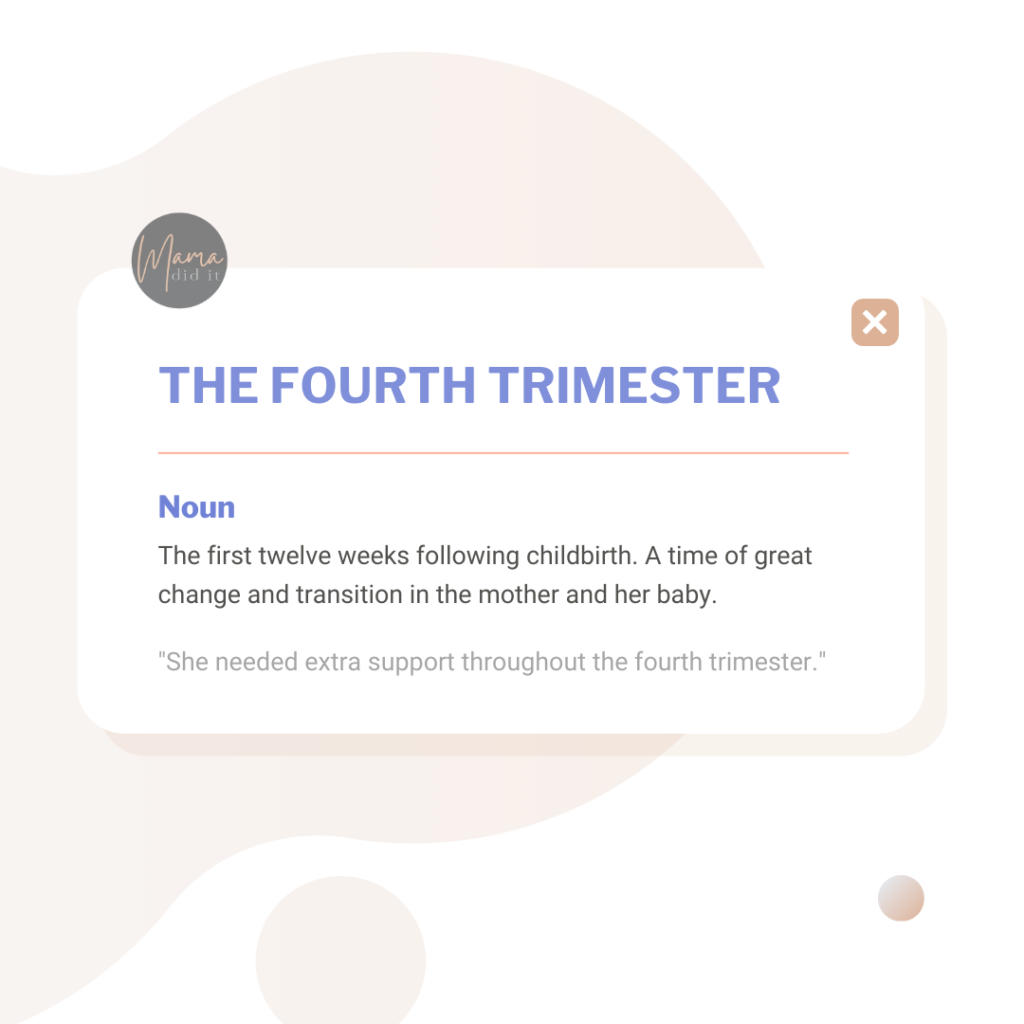How long is the fourth trimester and what can I expect from it?
The fourth trimester is not really a new term, but it is one that is slowly becoming trendy. It is something that needs some extra light shed on it, so I’ll gladly accept this trend! Let’s take a look at how long the fourth trimester is.
As a mother-baby nurse for over 15 years, you would think the term “fourth trimester” would have come up often. It did not. Postpartum was the more common language.
You have probably heard the term “postpartum” before. It literally means “after birth.” For many years, much emphasis was placed on the postpartum period. It was viewed as the first six weeks after birth. What I came to learn after my first baby, and what many in the medical community are taking note of, is that the changes happening in a woman’s life and body extends well beyond 6 weeks.

The fourth trimester was a term first coined in 2002 by the pediatrician, Dr. Harvey Karp. He believes that the first three months after giving birth are a time where baby and mom are separate but still one. It’s a continuation of life inside the womb, but on the outside. What is the fourth trimester and why does it matter?
This is one of the reasons that comfort measures such as swaddling and “shshing” your baby works so well. It mimics life inside of the womb. It’s also one of the reasons that baby’s love doing skin-to-skin with their mothers. Not only is it warm, but they recognize their mother’s smell and her heartbeat they have become so accustomed to. It feels like home to a newborn! Dad’s are great at skin-to-skin too!
How long does the fourth trimester last?

According to Dr. Karp, the fourth trimester lasts for three months (or 12 weeks).
It is a huge time of transition in the mom’s life and in her baby’s life. When we give birth, our hormones and brains are literally making vast changes to adapt to this new “mom life.” When we struggle emotionally, it isn’t because we are weak or a bad mom, it means we are having trouble adjusting to the amount of change taking place within our bodies. There is much science happening behind the curtain of the fourth trimester.
It is normal for women to need extra support during this time. Our hormones will not begin to stabilize for at least six months. Some research suggests it can take two years or even longer. Yikes! This may be one of the reasons we are especially vulnerable during this time to depression and other mental health disorders.
Many women attest to the fact that around 12 weeks they begin to feel “adjusted” to life with a baby. Sleep schedules are usually more on track, routines are established, and their body has healed from childbirth.

Though it is still in the works, culture is shifting to accept the fact that women are not “back to normal” at 6 weeks postpartum. Much research and medical practice are beginning to back what we mothers have known for a long time, we need better support throughout our fourth trimester. Cheers, to change for the better!
You may also like Motherhood Truths for the Tough Days, 7 Things You Should Know about Sex after Birth, and Does the First Poop after Birth Hurt?
